Disclosure: This article contains affiliate links. We may earn a commission from purchases at no extra cost to you, which helps our travel content.
The first time I stepped foot in Alamogordo, I was struck by how this modest New Mexican town sits at a fascinating crossroads of cultures, histories, and ecosystems. As someone who's spent years documenting traditional healing practices across continents, I found unexpected parallels between the indigenous knowledge systems here and those I've studied in Peru and Thailand. This past fall, I took a weekend detour to Alamogordo while traveling between wildlife sanctuaries in the Southwest. What was meant to be a brief stopover became a revelation of hidden cultural treasures and natural wonders that most visitors completely miss. Drawing on conversations with local Apache elders, park rangers with decades of experience, and multi-generational business owners, I've compiled these ten authentic experiences that will transform your family's visit from typical tourism to meaningful cultural immersion – all while keeping your budget intact.
1. Dawn Wildlife Walks at Oliver Lee Memorial State Park
As a veterinarian with a particular interest in desert adaptations, Oliver Lee Memorial State Park has become my sanctuary for wildlife observation in Alamogordo. While most visitors arrive mid-morning, I've discovered that arriving at the Dog Canyon Trail just before sunrise reveals a completely different ecosystem in action.
On my last visit, I set out at 5:30 AM with my compact binoculars, which I've found perfect for spotting wildlife in varying light conditions. The park ranger had tipped me off about a family of javelinas that frequently forage near the trailhead at dawn, and sure enough, within twenty minutes of quiet observation, I spotted them rooting through the desert vegetation.
What makes this experience particularly special for families is the opportunity to witness the desert's natural rhythm unfold. My colleagues who've brought their children report that kids are fascinated by the desert's transformation – from the nocturnal creatures retreating to their daytime shelters to the diurnal animals emerging for their day.
The Apache people who originally inhabited this land understood these rhythms intimately, and walking these trails at dawn connects visitors to that ancient understanding of the landscape. The park ranger can provide you with a wildlife checklist specific to the season, which turns the walk into an engaging scavenger hunt for children. During fall, look for mule deer, desert cottontails, and if you're exceptionally lucky, the elusive kit fox.

💡 Pro Tips
- Arrive 30 minutes before official sunrise for optimal wildlife viewing
- Bring water and snacks – the desert air is deceptively dehydrating, even in cooler months
- Ask for the seasonal wildlife checklist at the visitor center for a kid-friendly nature hunt
2. The Secret Indigenous Craft Workshop at the Tularosa Basin Historical Society
Few visitors realize that tucked behind the main exhibits at the Tularosa Basin Historical Society Museum is a small workshop space where local Apache and Hispanic artisans gather to preserve traditional crafting techniques. My background in studying indigenous knowledge systems drew me to this space immediately, and it's become my favorite recommendation for families seeking authentic cultural experiences.
Every Saturday morning in fall, the museum hosts what they call 'Maker Mornings,' where visitors can learn traditional crafts like yucca fiber weaving, micaceous pottery, or piñon pine bead making. What makes this experience special is that it's not marketed to tourists – it's primarily a community space for knowledge transmission between generations.
During my visit last October, I joined a session led by Maria Gonzales, a 78-year-old master weaver whose family has been creating traditional Apache burden baskets for seven generations. She showed us how to prepare yucca fibers using techniques that date back centuries, explaining how these same materials were once used to create medicine pouches for healing herbs.
For families, this workshop offers something increasingly rare: the opportunity for children to create something meaningful with their hands under the guidance of culture bearers. The museum charges only a small materials fee ($5-10 per person), making this an affordable way to connect with authentic local traditions. The artisans are particularly welcoming to children, seeing them as vessels for cultural continuation.
What I appreciate most about this experience is that it creates a genuine exchange rather than a performance of culture for tourists. You're not just observing tradition – you're participating in its living continuation.
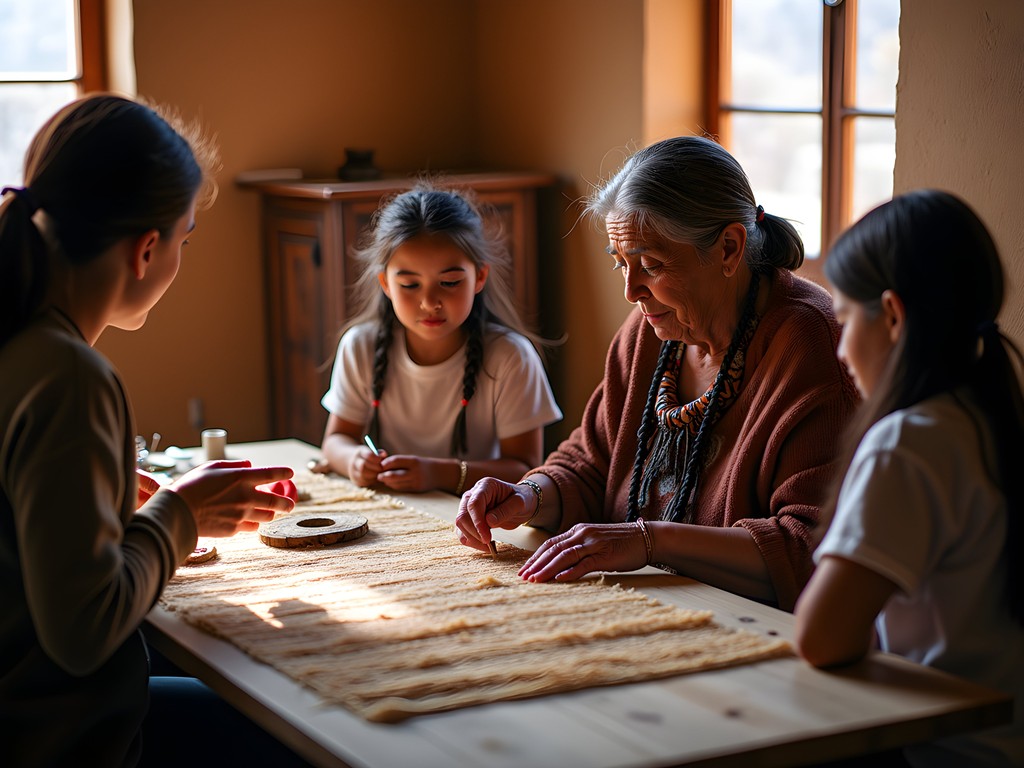
💡 Pro Tips
- Call the museum at least a day ahead to confirm the workshop schedule, as it sometimes changes based on artisan availability
- Bring a small notebook for recording techniques and stories shared by the elders – they often contain profound ecological knowledge
- Purchase materials locally if possible rather than bringing your own, as this supports the museum's cultural preservation efforts
3. Desert Botanical Medicine Walk with Local Healers
My professional interest in traditional veterinary practices has always led me to seek out local healers wherever I travel. In Alamogordo, I was fortunate to connect with Roberto Chávez, a third-generation curandero (traditional healer) who offers private botanical walks for those interested in the medicinal properties of desert plants.
While not advertised through conventional tourism channels, these walks can be arranged through the local herb shop, Desert Rain Botanicals, on 10th Street. The two-hour experience costs just $25 per family and provides insights into healing traditions that blend indigenous Apache knowledge with Hispanic curanderismo.
Roberto begins each walk by explaining the ethical harvesting practices that have sustained these plant populations for centuries. As we wandered through the foothills, he pointed out creosote bush, which local ranchers have traditionally used to treat hoof infections in livestock – a practice that aligns remarkably with similar applications I've documented in rural Thailand.
For families with children, Roberto adapts the content beautifully, turning the walk into a sensory exploration. Kids are encouraged to touch, smell, and sometimes taste (when safe) the various plants, creating memorable connections to the landscape. He also shares age-appropriate stories that frame the plants as characters in the desert's ongoing story.
I recommend bringing a field notebook to document the plants you encounter. These waterproof notebooks have served me well through monsoon seasons across multiple continents and are perfect for the unpredictable fall weather in New Mexico.
What makes this experience truly special is how it reveals the landscape not as something to merely look at, but as a living pharmacy and grocery store that has sustained communities for millennia. It transforms how children see the seemingly sparse desert environment, revealing its hidden abundance.
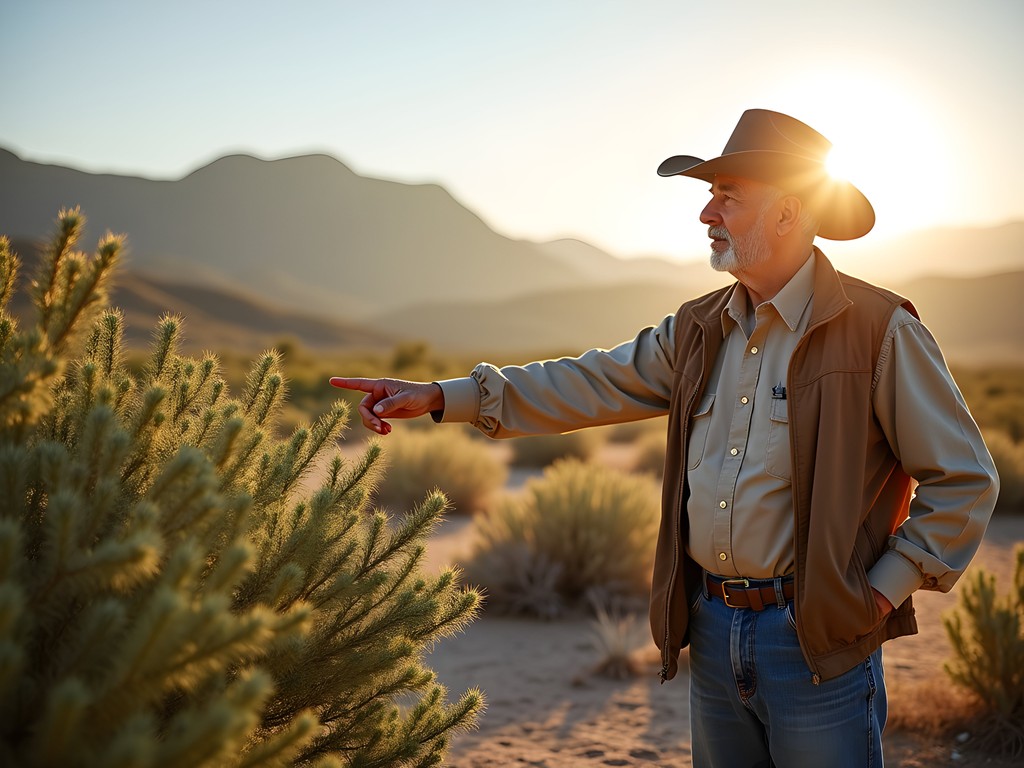
💡 Pro Tips
- Book at least three days in advance through Desert Rain Botanicals, as Roberto has limited availability
- Wear closed-toe shoes and bring sun protection – the walks typically happen in late afternoon when the light is best for plant identification
- Let Roberto know if anyone in your family has specific health interests, as he can tailor the walk to highlight relevant plants
4. The Hidden Petroglyphs of Three Rivers
While Three Rivers Petroglyph Site is on most tourists' radars, few visitors know about the 'hidden gallery' that requires a bit more effort to access. As someone fascinated by indigenous knowledge systems, I've found this lesser-known section of the site to be profoundly moving and far less crowded.
To find it, you'll need to speak with the site ranger about the northern extension trail, which isn't featured on the standard visitor maps. This moderate 1.5-mile hike leads to a secluded ridge containing petroglyphs that archaeologists believe were used specifically for knowledge transmission between generations.
What makes this experience special for families is the intimate connection you can form with these ancient communications without the crowds. On my last visit, my friends brought their children, ages 8 and 10, and we spent nearly two hours alone with these remarkable carvings. The kids were enthralled by the animal depictions, particularly those showing wildlife behaviors that demonstrated sophisticated ecological understanding.
I recommend bringing a hiking daypack with plenty of water, snacks, and sun protection. This versatile pack has been my go-to for shorter explorations across five continents, with enough room for essentials while remaining lightweight enough for children to carry comfortably.
What struck me most about these particular petroglyphs was their similarity to knowledge-sharing symbols I've documented in indigenous communities in Peru and Thailand. The ranger explained that some archaeologists believe these specific carvings served as teaching tools for young members of the community, illustrating seasonal changes, animal migration patterns, and medicinal plant locations – essentially functioning as an ancient field guide to desert survival.
For families interested in deeper understanding, arrange your visit for a Saturday when volunteer archaeologist Dr. Marquez occasionally offers informal talks at the main site. She can provide context about the hidden gallery if you mention your interest in visiting it.
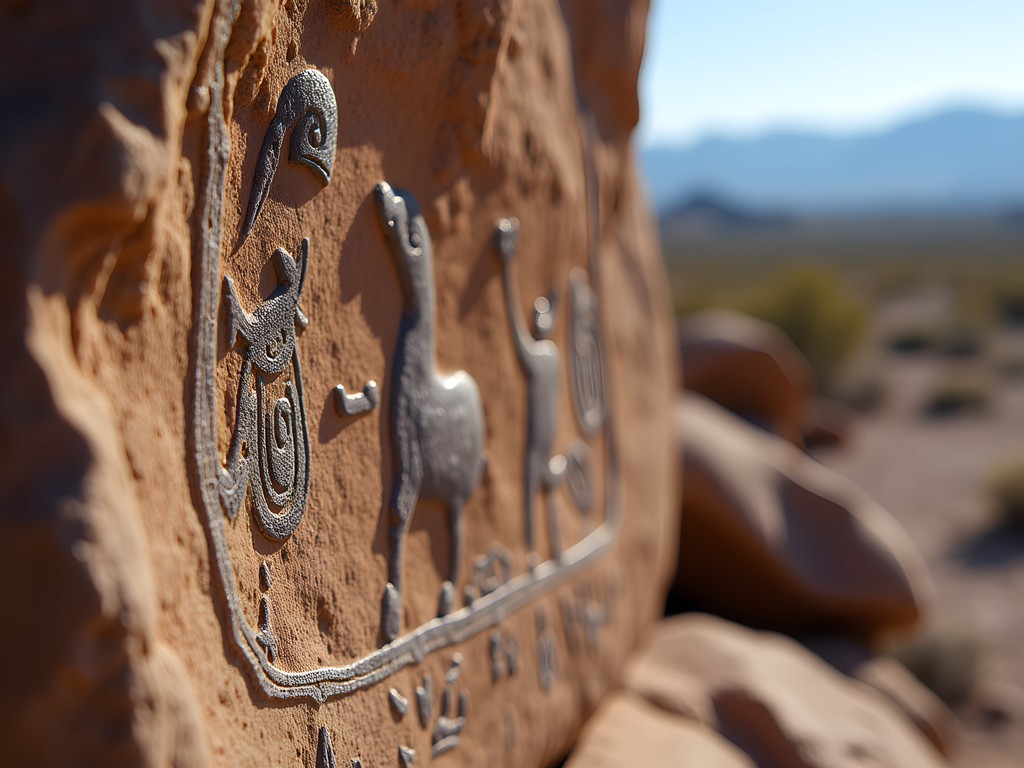
💡 Pro Tips
- Visit early in the morning (before 9 AM) to secure permission to access the northern extension trail
- Bring binoculars to spot wildlife along the trail – fall migration brings interesting bird species to the area
- Download the free Three Rivers Petroglyph Guide app before visiting, as there's limited cell service at the site
5. Authentic New Mexican Family Dinner at Margo's
When traveling with my own nieces and nephews, I've learned that authentic food experiences create some of our most lasting memories. In Alamogordo, locals consistently directed me away from the main tourist establishments to Margo's New Mexican Kitchen, an unassuming family-owned restaurant tucked behind a gas station on the south side of town.
What makes Margo's special isn't just the food – though their hand-made sopapillas drizzled with local piñon honey are transcendent – but the multi-generational family atmosphere. On Friday evenings, three generations of the Martinez family work together in the open kitchen, with 12-year-old Elena often helping her grandmother prepare the chile rellenos using techniques unchanged for decades.
For families visiting Alamogordo, Margo's offers a rare window into authentic New Mexican cuisine that differs significantly from the Tex-Mex many visitors expect. The restaurant uses heritage chile varieties grown in the family's plot, including several that pre-date European arrival in the region.
My recommendation for families is to order the 'Mesa Compartida' (shared table) option, which isn't on the menu but available if you ask. For about $35, they'll bring a sampling of family-style dishes that showcase the range of local flavors, adjusted for your preferred spice level. The portions are generous enough to feed a family of four with leftovers.
What touched me most during my visits was how the Martinez family takes time to explain the cultural significance of each dish, particularly to children. When I brought my colleague's family, her daughter was invited to help press tortillas in the kitchen – an experience that became the highlight of their trip.
As someone who studies traditional knowledge systems, I appreciate how Margo's preserves culinary traditions that tell the story of cultural resilience and adaptation in this region. It's not just a meal – it's living history on a plate.

💡 Pro Tips
- Visit between 5-6 PM to avoid the local dinner rush that happens after 7 PM
- Ask about the 'chile level' for kids – they can prepare milder versions of traditional dishes
- Bring cash as they sometimes have issues with their card machine, especially during busy periods
6. Amateur Astronomy Night at Apache Point
While White Sands and the Space Museum draw most visitors to Alamogordo, one of my most profound experiences came from a tip shared by a local veterinary colleague: the community astronomy nights held near Apache Point Observatory. These events, organized by amateur astronomers from the area, offer families an incredible opportunity to experience some of the clearest night skies in the United States.
What makes this experience special is its grassroots nature. Unlike formal observatory tours, these gatherings happen in a clearing about two miles from the main facility, where local astronomy enthusiasts bring their personal telescopes to share with visitors. The events typically run on the Saturday nearest the new moon during fall months, when the skies are exceptionally clear.
I joined one such gathering last October with my star guide book, which has been my companion for stargazing across five continents. What impressed me was how the local astronomers adapted their explanations for different age groups, weaving in both scientific facts and cultural stories about the constellations. They shared Apache star legends alongside discussions of exoplanets and nebulae, creating a rich tapestry of knowledge that honored multiple ways of understanding the cosmos.
For families with younger children, the organizers set up a 'touch table' with meteorite samples and space-related artifacts that kids can handle. They also offer simplified star charts that children can use to conduct their own observations with the naked eye while parents take turns at the telescopes.
The location's elevation (about 9,000 feet) means temperatures drop significantly after sunset, even in early fall. I recommend bringing layers and a thermos of hot chocolate to keep everyone comfortable during the 2-3 hour experience. The event is completely free, though a small donation to the Alamogordo Astronomy Club is appreciated to help maintain their outreach equipment.
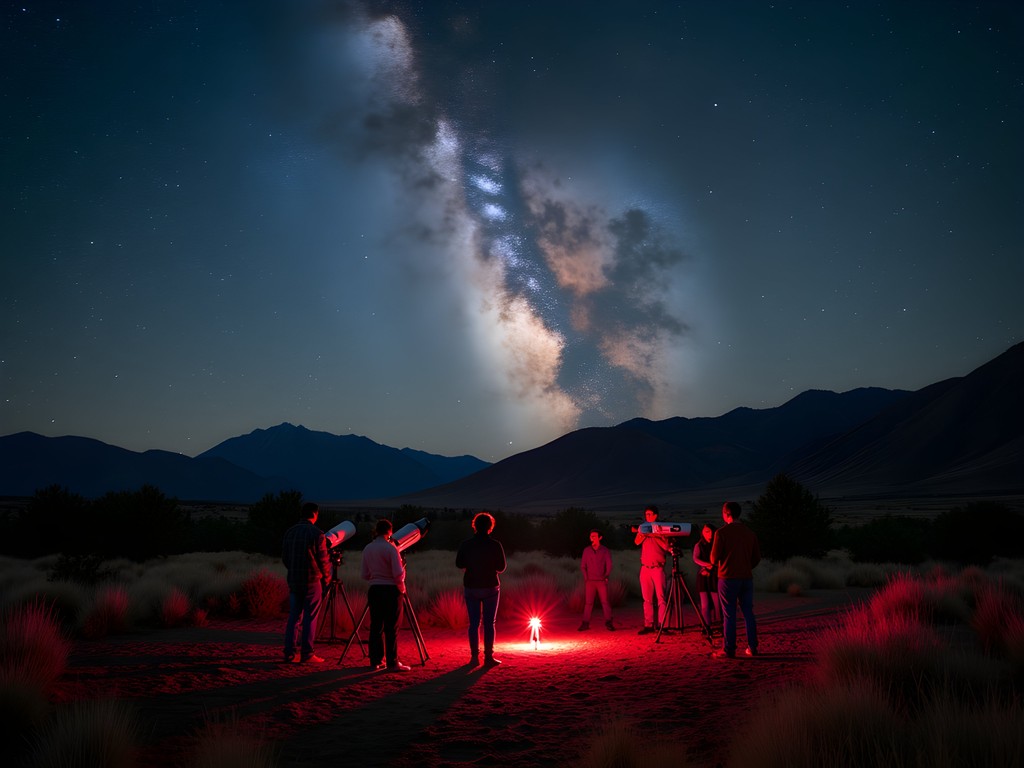
💡 Pro Tips
- Check the Alamogordo Astronomy Club's Facebook page for exact dates, as they align with the new moon phase
- Bring red-light flashlights (or cover regular flashlights with red cellophane) to preserve night vision
- Arrive before sunset to get oriented and claim a good viewing spot before darkness falls
7. The Forgotten Hot Springs Trail
Perhaps the most closely guarded local secret in the Alamogordo area is the existence of a small, natural hot spring tucked into the foothills of the Sacramento Mountains. This isn't a developed spa or tourist attraction – it's a small natural pool that local families have been visiting for generations.
I hesitated to include this in my guide, as locals are protective of this spot to prevent overcrowding and damage. However, sharing with the understanding that visitors will respect this sacred place seems appropriate. The spring is located on public land about 12 miles east of town, accessible via a moderate 1.5-mile hike from a nondescript pullout on Dry Canyon Road.
What makes this experience special for families is the intimate connection to the landscape it provides. The small pool (about 8 feet across) maintains a constant temperature of around 100°F year-round and is surrounded by native vegetation that creates a natural sanctuary. Local Apache communities have traditionally considered this a healing place, particularly for skin conditions and joint ailments.
During my visit with friends and their children, we encountered a local family who had been coming here for five generations. They shared stories of how their grandparents would bring injured animals here to heal – a practice that resonated deeply with my veterinary background and studies of traditional healing methods.
For families planning to visit, timing is everything. Early mornings (before 9 AM) or weekdays are best to ensure you might have the spring to yourself. The trail is unmarked, so you'll need to ask for specific directions at the Visitor Center in town. Make sure to mention that you understand the importance of leaving no trace and respecting the site's cultural significance.
Bring appropriate swimwear, towels, and water shoes, as the bottom of the spring is natural stone. The surrounding area offers excellent opportunities for children to observe desert ecology in action, particularly the unique microhabitat created by the spring's constant moisture.
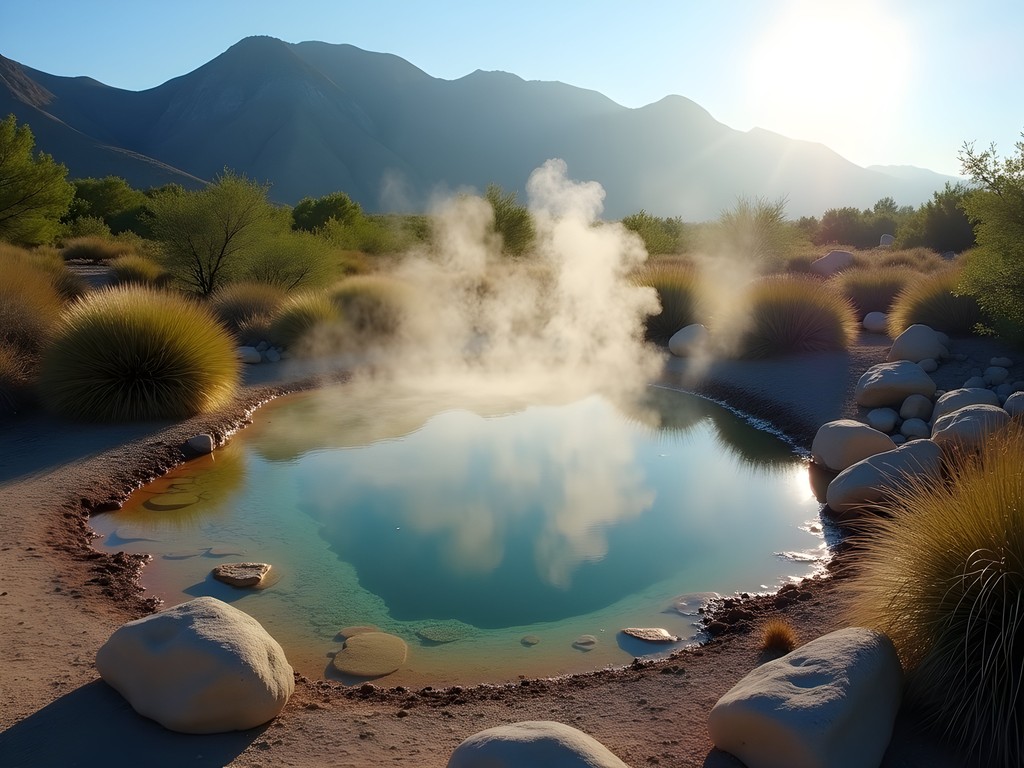
💡 Pro Tips
- Visit on weekday mornings to avoid local weekend crowds
- Pack out EVERYTHING you bring in – this fragile ecosystem depends on visitor respect
- Keep voices low, as wildlife frequently visits the spring in the early morning hours
8. The Craftsman's Workshop at Heart of the Desert
While most visitors to Heart of the Desert come for the pistachios and wines, few discover the small woodworking studio tucked behind the main shop. Here, master craftsman Miguel Rojas creates beautiful objects from the pruned pistachio wood that would otherwise be discarded – a perfect example of the sustainable practices that have always fascinated me across cultures.
What makes this experience special for families is Miguel's open-door workshop policy. Unlike many artisans who work behind closed doors, Miguel welcomes visitors, particularly children, to observe his process and even try their hand at simple woodworking techniques. He sees this as continuing the apprenticeship tradition that taught him his craft.
During my visit, I watched as he guided a 10-year-old visitor through the process of sanding a small pistachio wood pendant, explaining how the tree's growth patterns create unique grain patterns in the desert environment. His patience and genuine desire to share knowledge reminded me of master craftspeople I've met in maker spaces from Thailand to Peru.
For families, I recommend visiting between 2-4 PM on weekdays, when Miguel typically works on smaller projects that allow for more interaction. He offers a 'Mini Maker' experience where children can create a simple pistachio wood ornament for $10, which includes materials and guidance. These sessions aren't advertised – you simply need to ask at the main counter if Miguel is available for a workshop visit.
What I appreciate most about this experience is how it connects visitors to the agricultural heritage of the region through craft. Miguel explains how pistachio cultivation has adapted to the desert environment, creating sustainable agricultural practices that work with, rather than against, the local ecosystem. It's a wonderful way for children to understand the connections between farming, craftsmanship, and environmental stewardship.

💡 Pro Tips
- Call ahead to confirm Miguel's workshop schedule, as he occasionally travels for craft fairs
- Budget at least 45 minutes for the full experience, including time for children to try simple woodworking
- Bring a small sketchbook for children to design their project before working with Miguel
9. Dawn Wildlife Photography at Holloman Lake
Most visitors to Alamogordo never discover Holloman Lake, a small body of water on the edge of Holloman Air Force Base that serves as a critical stopover for migratory birds. As a veterinarian with a passion for wildlife observation, this hidden gem has become my favorite spot for dawn wildlife photography, particularly during fall migration.
What makes this experience special for families is the accessibility of wildlife viewing without crowds. Unlike more famous birding destinations, Holloman Lake rarely sees more than a handful of visitors, even during peak migration seasons. The lake's location creates a unique desert oasis effect, attracting not just birds but also mammals that come to drink at dawn and dusk.
During my last visit in October, I set up before sunrise with my spotting scope, which has been invaluable for wildlife observation across multiple continents. Within an hour, we had observed sandhill cranes, several species of ducks, coyotes coming to drink, and even a bobcat briefly appearing at the lake's edge. The morning light on the water creates perfect conditions for both photography and quiet observation.
For families with children, the experience becomes a natural science classroom. I recommend bringing a simple bird identification guide and challenging kids to identify different species – the relatively small area makes this manageable even for younger children. The flat, easy walking path around the lake is suitable for all ages and abilities.
To access the lake, you'll need to check in at the Holloman AFB Visitor Center to get a day pass for the publicly accessible wildlife area. This process takes about 15 minutes and requires photo ID for adults. It's best to arrive at the visitor center when they open at 7 AM, which puts you at the lake during prime wildlife activity time.
What I find most meaningful about this experience is how it reveals the resilience of desert ecosystems and the critical importance of water sources in arid environments – something indigenous communities have understood and protected for millennia.
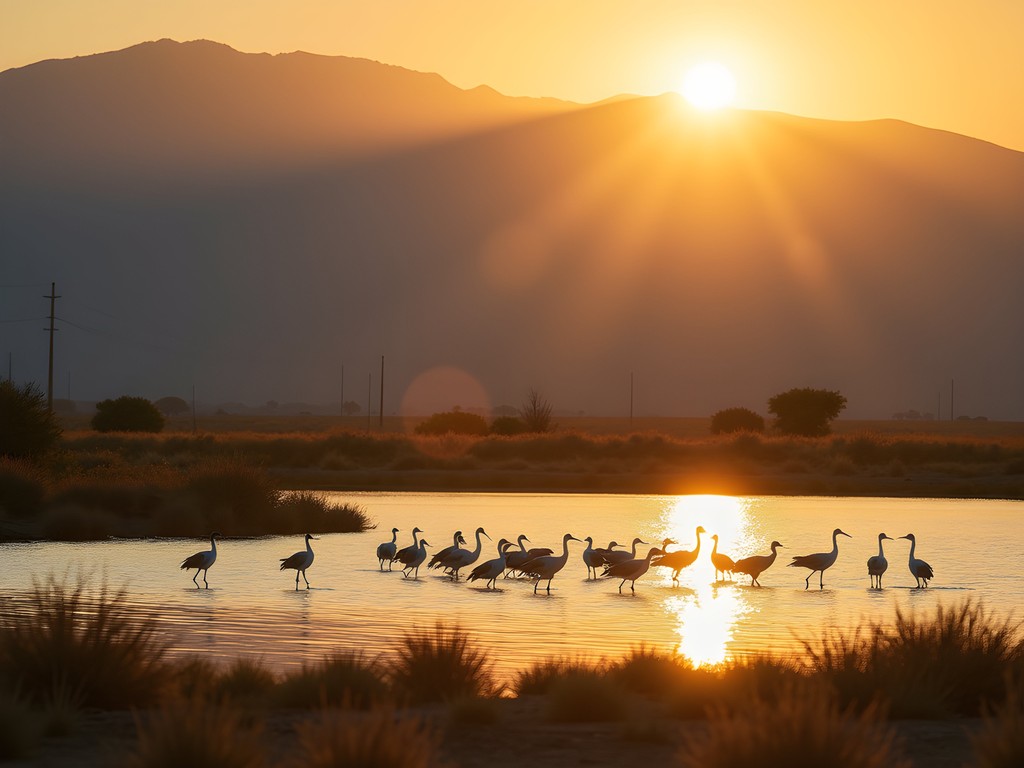
💡 Pro Tips
- Bring government-issued photo ID for all adults in your group to obtain access passes
- Pack binoculars for each family member if possible – even inexpensive ones enhance the experience significantly
- Visit the Alamogordo Public Library beforehand to borrow their free 'Birding Backpacks' which include kid-friendly guides and activities
10. The Storytelling Circle at Alameda Park
Perhaps my most unexpected discovery in Alamogordo was the informal storytelling circle that gathers at Alameda Park on Sunday evenings during fall months. This grassroots community tradition brings together elders from various cultural backgrounds – Apache, Hispanic, and Anglo – to share oral histories and traditional tales as the sun sets.
What makes this experience special for families is its authenticity and intergenerational nature. Unlike staged cultural performances for tourists, this is a genuine community gathering where stories are shared to maintain cultural continuity. Children are not just welcome but centered in the experience, often invited to sit in the inner circle closest to the storytellers.
The event begins around 5:30 PM near the large cottonwood tree on the park's eastern edge. Community members bring folding chairs or blankets, and there's often a small potluck of traditional foods shared among participants. Visitors are welcome to join, though coming with a local or calling the Cultural Center beforehand to express interest is appreciated.
During my visit, I was moved by how the stories wove together different cultural perspectives on the same landscape. An Apache elder shared traditional stories about the formation of White Sands, while a Hispanic storyteller recounted tales of the region during the early ranching period. The stories weren't presented as museum pieces but as living wisdom with contemporary relevance, often including environmental knowledge about desert adaptation and resilience.
For families visiting Alamogordo, this provides an unparalleled opportunity to experience the region's cultural depth through its oral traditions. Children are particularly enchanted by the stories, which often feature animal characters and explain natural phenomena in accessible ways.
What I value most about this experience is how it honors multiple knowledge systems and creates space for cross-cultural understanding. In our increasingly divided world, witnessing different communities come together to share their unique perspectives on a shared landscape offers a powerful model of respectful coexistence.
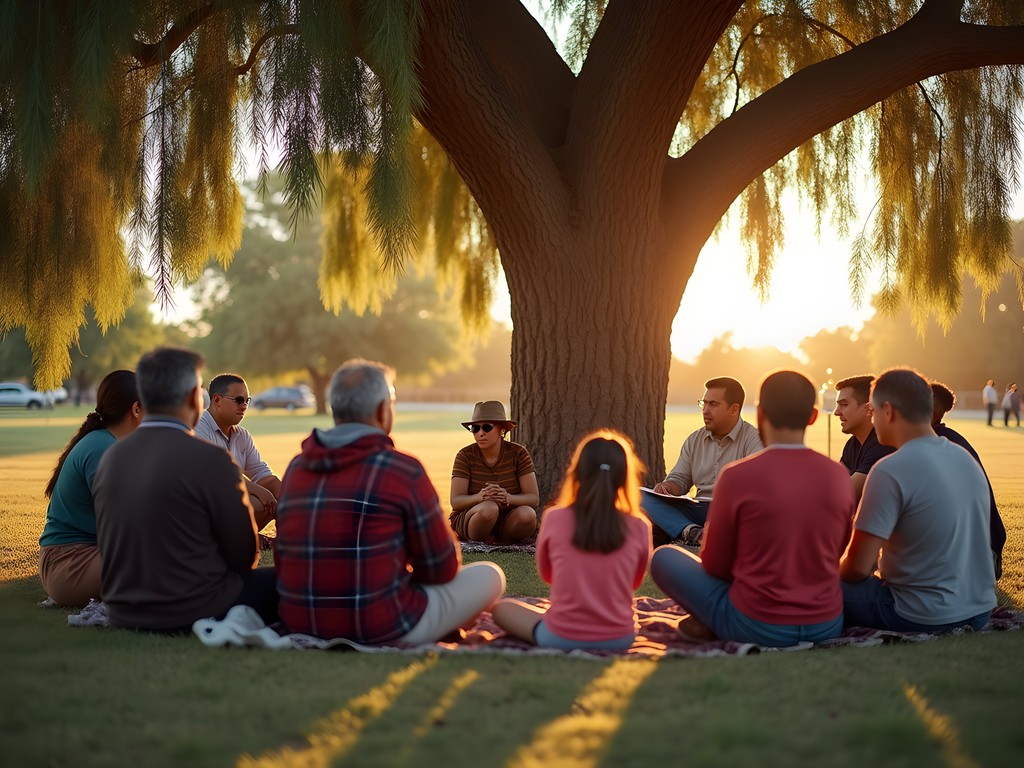
💡 Pro Tips
- Bring a small food contribution to share if possible – simple store-bought items are perfectly acceptable
- Arrive 15-20 minutes early to introduce yourself to the organizers and explain your interest
- Be prepared to participate if asked – visitors are sometimes invited to share brief stories from their own cultural traditions
Final Thoughts
Alamogordo reveals itself slowly to those willing to look beyond the standard tourist attractions. These ten experiences have shown me how this modest New Mexican town serves as a living repository of multicultural wisdom, ecological knowledge, and intergenerational teaching. What makes these experiences particularly valuable for families is their accessibility – both financially and logistically – and their ability to engage children through hands-on participation rather than passive observation. As you explore these hidden aspects of Alamogordo, you're not just witnessing local culture but participating in its continuation and evolution. In my travels across five continents studying indigenous knowledge systems, I've found that the most meaningful connections happen when we approach places with respect, curiosity, and a willingness to learn from those who know the land most intimately. Alamogordo has taught me that profound cultural experiences don't require exotic locations – sometimes they're waiting just beneath the surface of places we might otherwise pass through without a second glance.
✨ Key Takeaways
- The most authentic experiences come through connecting with local knowledge keepers rather than commercial tourism operations
- Early mornings and weekday visits generally provide more intimate experiences at natural sites
- Children engage most deeply with culture through hands-on participation and sensory experiences
📋 Practical Information
Best Time to Visit
Mid-September to early November
Budget Estimate
$200-300 for a family weekend excluding accommodations
Recommended Duration
2-3 days
Difficulty Level
Easy
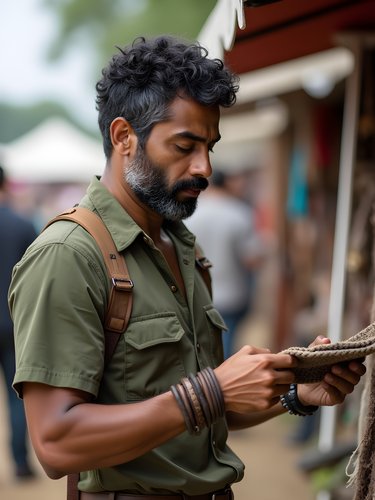

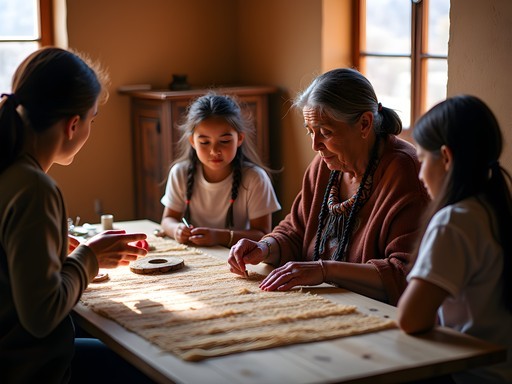
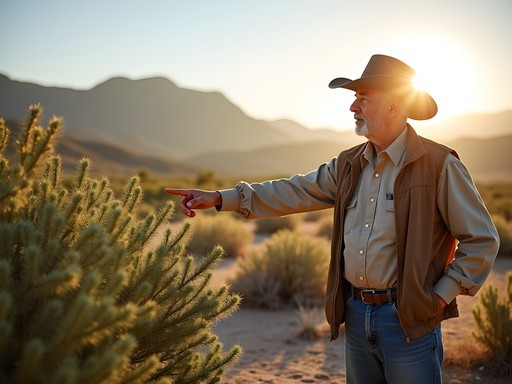
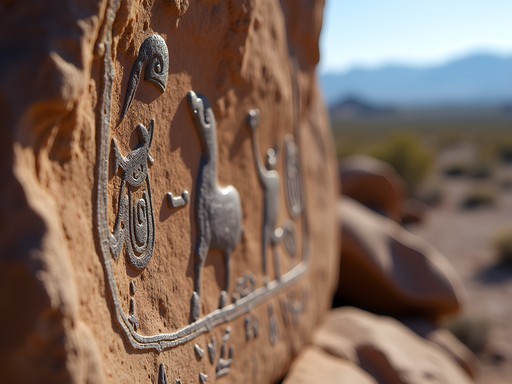

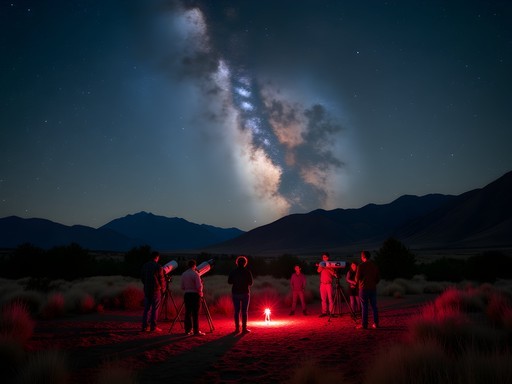



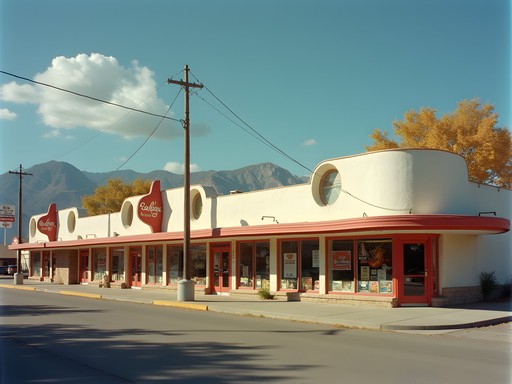





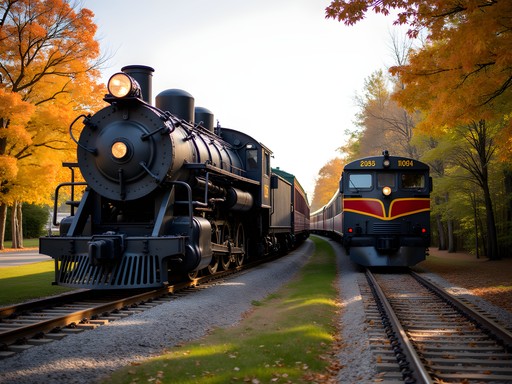
Comments
DesertExplorer505
Just got back from Alamogordo and used this guide extensively - thank you! The dawn walk at Oliver Lee was absolutely magical. We saw mule deer, jackrabbits, and a roadrunner! The indigenous craft workshop was unfortunately booked solid (lesson learned), but we did find that amazing little taco stand you mentioned near the farmers market. Those green chile breakfast burritos were life-changing. One tip for others: the petroglyphs trail can be easy to miss - there's a small unmarked path about 100 yards past the main trail marker.
smartrider
Thanks for the petroglyph trail tip! I'm heading there next week and would have totally missed that.
redmood
Local here. Don't miss the pistachio farms. Free samples.
tripvibes
Ooh thanks for the tip! Love pistachios!
wanderlustblogger
Just got back from Alamogordo and did the petroglyphs hike! The directions in this post were spot on - we would have missed that unmarked trail otherwise. Brought plenty of water which was definitely needed. The local guide mentioned they're working on better signage but want to balance accessibility with preservation. Such an incredible experience seeing 1,000+ year old art!
Megan Martin
I was in Alamogordo last year for a business conference and wish I'd had this guide then! I did manage to squeeze in a visit to the New Mexico Museum of Space History, but completely missed these local gems. The Desert Botanical Medicine Walk sounds fascinating - I've been getting more interested in traditional healing practices. For anyone going, I'd also recommend the local pistachio farms just outside town. I picked up some amazing chili-flavored ones that my colleagues are still talking about. I used my pocket field guide during my brief explorations and it was invaluable for identifying local flora.
Raj Thomas
Thanks for adding the pistachio farm tip, Megan! Heart of the Desert and McGinn's are both excellent choices. Next time you're in town, definitely try to schedule the medicine walk - Tomas, the guide, is a wealth of knowledge.
springvibes
Ooh those chili pistachios sound delicious! Adding that to my list too!
Timothy Jenkins
Brilliant write-up on Alamogordo, Raj. I've been documenting lesser-known American desert towns for a project, and your insights align perfectly with my experiences there. One addition I might suggest is the Thursday evening astronomy gatherings at Sunspot Solar Observatory just outside town. The local astronomers are incredibly knowledgeable, and the high elevation provides exceptional viewing conditions. They even let visitors use their smaller telescopes. The contrast between daytime desert exploration and nighttime celestial observation creates a profound sense of place. Alamogordo truly sits at the intersection of earth and sky.
oceanace
How do you book that Indigenous Craft Workshop? Couldn't find it online anywhere.
Raj Thomas
You actually can't book it online! You need to visit the Tularosa Basin Historical Society in person and ask about the workshop schedule. They intentionally keep it low-key to preserve the authenticity. Best to go early in your trip so you can plan around their schedule.
luckybuddy
Does anyone know if these activities are good in November? Planning a trip then and worried about the weather.
Timothy Jenkins
I was there last November and the weather was perfect - cool mornings and pleasant afternoons. The wildlife walks might actually be better then as animals are more active when it's not scorching hot. Just bring layers as desert temperatures can fluctuate quite a bit.
luckybuddy
Thanks! That's super helpful. Definitely packing my hiking boots for those trails!
Sophia Gomez
Raj, this is gold! I visited Alamogordo last year but clearly missed so many hidden gems. The Dawn Wildlife Walks at Oliver Lee sound magical - I actually stayed near there but had no idea this was a thing. I did stumble upon a small family-run Mexican restaurant just outside town that served the most incredible chile rellenos I've ever tasted. The grandmother makes them fresh each morning! I think it was called Casa Martinez? Has anyone else found it? Next time I'm definitely doing that Desert Botanical Medicine Walk. Thanks for going beyond the usual tourist spots!
redmood
Casa Martinez is legit. Best sopapillas too.
tripvibes
OMG this is exactly what I needed! Heading to Alamogordo next month and was worried it would just be White Sands and nothing else. Those petroglyphs sound amazing!
Raj Thomas
So glad this helps! The petroglyphs are definitely worth the extra effort to find. Let me know if you have any questions before your trip!
tripvibes
Will do! Super excited now!
springvibes
Those hidden petroglyphs sound amazing! Adding this to my bucket list!
Venture X
Premium card with 2X miles, $300 travel credit, Priority Pass